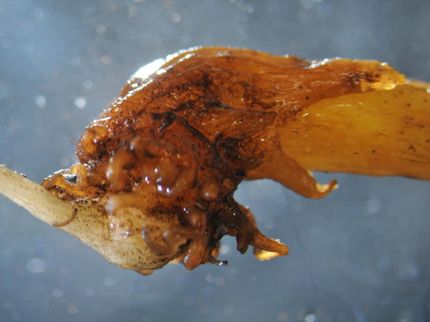VIB-K.U.Leuven scientists unravel the evolutionary process of beer and wine production
‘Genes living in the outskirts of chromosomes are more prone to duplication'
Advertisement
The ability of yeast cells to convert sugar to alcohol, the key process in the production of beer and wine, are the result of a remarkable evolutionary process. The genes that allow yeast to digest sugars in fruits and grains have been duplicated several times over the course of time – allowing for optimal conversion of different types of sugars (such as sucrose and maltose) into alcohol. The duplications arose because the genes for sugar processing are situated close to the unstable margin of the chromosome. The phenomenon appears not to be limited to alcohol production in yeast, but forms an important principle in the evolution of living organisms. The results are presented in a study by Kevin Verstrepen from K.U.Leuven and VIB, Andrew Murray from Harvard University, and Chris Brown, a joint student of Verstrepen and Murray.
Duplication of existing genes is an important evolutionary process
Living beings evolve generation after generation because their genetic material changes gradually. It remains a mystery how life, in a relatively short time, develops completely new properties. It is unlikely that they just appear out of nothing. Recent research, amongst others by VIB-scientists, showed that the duplication of existing genes can play a crucial role. One copy can retain the original function of the gene while the new copy may develop a new function. This can sometimes be very different from the original gene.
Living on the edge increases your chances of being duplicated
In the new study, Chris Brown, a PhD student in Verstrepen´s lab, shows that some genes that are closely located in the ends of the chromosomes, are duplicated more often. The ends of chromosomes, called subtelomeres, seem to function as evolutionary laboratories of our cells. New genes are continuously developed and tested in these "gene nurseries".
Duplication process is of great importance for beer yeast
It appears that duplication at the subtelomeres already occurred in the ancestor of our industrial beer and wine yeasts- Modern strains of beer yeast contain five to ten copies of a prehistoric gene that allows for some sugars to be digested. Each of these modern copies ensures that yeast can digest a particular sugar, and this is much faster than the prehistoric yeast. The massive duplications occurred probably around the Cretaceous era (66 to 145 million years ago). It was no coincidence that this involved the same period in which sweet fruits and grains developed. The duplication of the genes and the further evolution thereof, allowed yeast cells to digest the different sugars in the fruits. In this way, the subtelomeric "gene copying laboratory" ensured that yeasts were able to conquer a new niche. Interestingly, it seems likely that similar subtelomeric gene duplication also stimulates evolution and adaptation in higher organisms, including humans.
Original publication: Brown et al, "Rapid Expansion and Functional Divergence of Subtelomeric Gene Families in Yeasts", Current Biology 2010.



























































